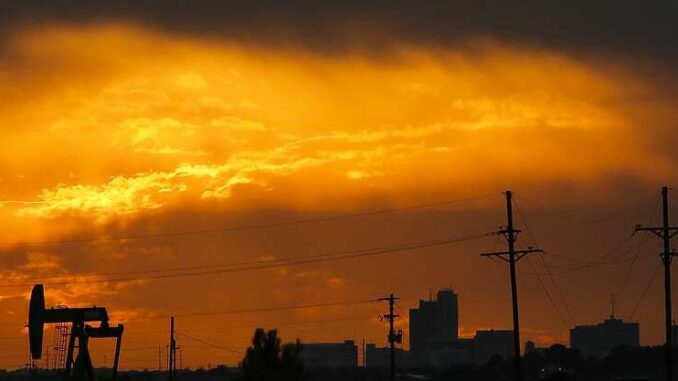
Calls continue for oil companies to produce more oil to help cut energy prices. Those calls have now joined by calls for refiners to not only produce more gasoline but to cut prices.
Among those seeking to educate the public on just how oil markets work are economists in the Federal Reserve banking system.
“We are the only Federal Reserve Bank with a dedicated energy team,” pointed out Garrett Golding, a business economist at the Federal Reserve Bank of Dallas. “We are playing point man on energy for the entire Federal Reserve System.”
Golding was participating in the monthly Oilfield Strong webinar presented by OTA Environmental Solutions. He told Grant Swartzwelder, president of OTA, that every Federal Reserve Bank maintains a blog on their websites and the Dallas Fed blog often discusses energy-related issues.
Asked by Swartzwelder – with tongue in cheek – why oil companies are “being the bad guys” in refusing to lower prices, Golding stressed that oil companies do not set oil prices, gasoline prices or diesel prices. Those are commodities, he said, that are traded globally thousands of times a day.
“When it comes to companies producing more to lower prices, two things won’t happen,” he said. “One is we’re already growing production. We anticipate US production will grow by 700,000 barrels a day between the end of 2021 and the end of 2022, the most growth from any producing country in those 12 months. The question is how much more can they do?”
That means the ability to increase production is extremely limited, he said, and not just by shareholders wanting more returns from public companies. Second, Golding said, the industry has been hampered for over a year now by the inability to hire people or obtain equipment, which frequently has been backordered for six to 12 months.
“That’s not enough to ramp up much beyond current plans,” he said. “We won’t know what 2023 will look lie for companies unto the end of the year. The paradigm of single-digit growth is here to stay. It’s not a function of shareholders and producing profits but how many rigs they can get out there and how many people are qualified to run them. That answer doesn’t show up in the news every day or in political soundbites.”
Golding, who was with the strategic planning department at Pioneer Natural Resources before joining the Fed, also countered criticism that operators are holding 9,000 drilling permits on federal leases that they aren’t using.
“If you look out over the last four or five years, the number of permits issued and the number of wells drilled using those permits is roughly 50 percent,” he said. “Companies have permits to have optionality on their leases and don’t fully know what they own at the moment but it’s important to have those permits because they last two years and operators can keep extending them if they think it’s an area they want to get into.”
The other piece of the equation is that between 2,000 and 3,000 wells are drilled on federal onshore lands anyway, he said.
“To be very generous and say 5,000 permits are ready to be drilled, it would take a few years to get through that on top of all the logistical and labor issues we’re talking about. In a lot of ways, the 9,000 drilling permits thing is borderline irrelevant because they’re working through the inventory of permits they have and are doing so as fat as they can.”
Focusing on producers in the Dallas bank’s area – which covers Texas, parts of New Mexico and parts of Louisiana – Golding said he doesn’t see much change in established plans.
“It would take a widespread macro event for us to see oil prices dip below $80 and start to potentially change the pace of drilling activity now,” he said. “A lot of these companies, their communication to us over the last year has been to be on cruise control and prepare for a scenario like this: Don’t ramp up capital expenditures when prices go up, so you’re protected when prices do drop.”
With oil prices staying at a healthy level of $80 or above, “we will still see activity increase next year. It will take something catastrophic for that to change. It’s hard to see where we can have acceleration beyond what’s already planned, again because of logistical issues and there’s debate on whether that is even doable because of labor shortages,” he said.
Truck drivers are in demand, he said, and now he’s hearing stories where the average tenure of works on a drilling rig is six months.
“That doesn’t indicate a safe environment in my mind, but it illustrates how much we can accelerate activity beyond what’s added every week,” he said.
Source: Mrt.com
